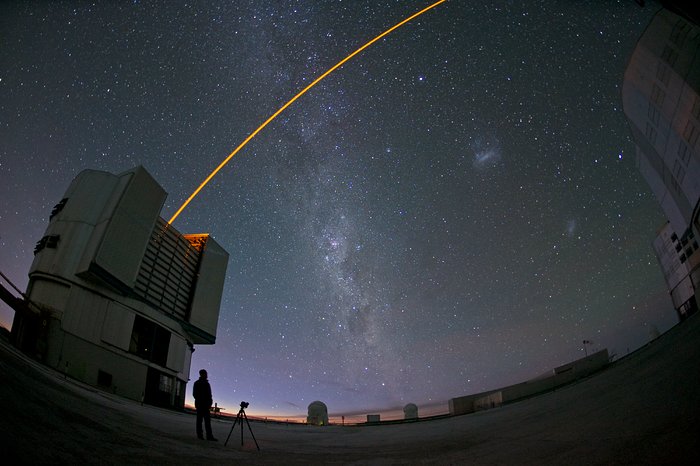VLT's adaptive optics at work
One of the major enemies of astronomers is the Earth’s atmosphere, which makes celestial objects appear blurry when observed by ground-based telescopes. To counteract this, astronomers use a technique called adaptive optics, in which computer-controlled deformable mirrors are adjusted hundreds of times per second to correct for the distortion of the atmosphere.
This spectacular image shows one of the four 8.2-metre Unit Telescope of ESO’s Very Large Telescope (VLT) facility, launching a powerful yellow laser beam into the sky. The beam creates a glowing spot — an artificial star — in the Earth’s atmosphere by exciting a layer of sodium atoms at an altitude of 90 km. This Laser Guide Star (LGS) is part of the VLT’s adaptive optics system. The light coming back from the artificial star is used as a reference to control the deformable mirrors and remove the effects of atmospheric distortions, producing astronomical images almost as sharp as if the telescope were in space.
Crédit:ESO
À propos de l'image
| Identification: | uhd_01_aec_48 |
| Type: | Photographique |
| Date de publication: | 22 janvier 2014 16:07 |
| Taille: | 4256 x 2832 px |
À propos de l'objet
| Nom: | Cerro Paranal, Paranal, Very Large Telescope |
| Type: | Unspecified : Technology : Observatory : Telescope |
| Catégorie: | Paranal |
